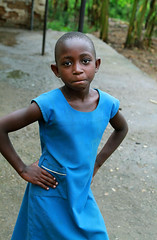
Thanksgiving 2011 will be one I always remember—and not because of the turkey and trimmings. Instead of the usual family feast, I shared a delicious meal of chapati, curry, and rice with students and teachers at a boarding school outside the city of Faridabad, not far from Delhi.
Arriving at Vidya Sanskar International School was like reaching a garden oasis. It’s lush, green, and well-appointed with extensive sports facilities and plenty of fresh, clean air. (After a few days in Delhi, blanketed by pollution, this was especially welcome.) About a third of the students and half the faculty live on campus, and our digs were a comfortable faculty apartment. Getting there involved a bumpy, three-hour cab ride from Agra, where my husband (who joined me a week ago) and I spent a couple days marveling at the Taj and other historic sites.
I spent the first morning at Vidya Sanskar (which translates, roughly, to “holistic learning”) sitting in on classes, and saw everything from 3-year-olds doing ambitious literacy work in Hindi and English to 16-year-olds studying environmental science. Then it was time for two half-days of workshops on project-based learning. By the end of the second day, one team was planning to have kids design and plant a medicine garden (after interviewing family members and health experts about various herbs) and another was imagining a student-designed rainwater harvesting system to water it. At the upper grades, teachers were talking about having students analyze the pros/cons of privatizing railroads and doing a marketing project on cell phones.
Not surprisingly, the question of covering the syllabus came up in our conversations. This school follows the University of Cambridge model, which culminates in challenging tests. Just as teachers in the U.S. worry about high-stakes testing, teachers here are accountable for student results on exams. At the same time, many teachers in India are recognizing that the traditional, test-heavy education system isn’t preparing their students to be critical thinkers. Hence, their keen interest in PBL—along with tough questions about how to make sure it works well.
Next stop: Mumbai
Then it was on to Mumbai, where I spent a day with a high-energy group of teachers at American School of Bombay. This IB school was a contrast to others I’ve visited in many ways, but the most dramatic difference here was the prevalence of technology. ASB was one of the first international schools to adopt the 1:1 model, and teachers (and students) have a familiarity with tech tools that I haven’t encountered anywhere else yet in India. Sitting in on one class, I saw students sharing Glosters, Prezis, blogs, and other products in a project that had them interpret Indian culture for different audiences, such as filmmakers, journalists, or police officers.
(Hat tip @solomonsenrick)
With technology well-integrated, ASB is now focusing on strategies to further expand students’ 21st-century skills. An action research team has been investigating project-based learning, and several teachers have already taken the plunge into projects. Given this context, we turned the day into a mini-project. A highlight was listening to teacher teams share out their ideas about making sure essential elements of good projects are addressed. I’m eager to hear where they go next on their PBL journey.
Village Contrast
Next on the itinerary: Pune, a quick flight from Mumbai, and home to two schools operated by Gyanankur English School. I started with a visit to a school in Kesnand, where nearly 500 children from seven surrounding villages come to learn. It was a stark contrast to the high-tech environment of ASB (although there is a computer lab at the village school, with donated equipment that allows students to learn basics like how to use a mouse and save files). The school vision is to offer children a joyful learning environment, and that was evident as I made my way from one classroom to the next. It’s also a place for hands-on learning, and students were eager to share their recent creations.

I spent the next day working with teachers from Kesnand along with their colleagues from Gyanankur English School in Pune. Our focus what how to shift from activities—which they’re already doing—to authentic projects. It might seem like a stretch for low-resourced schools to even try PBL, but these teachers were game. By the end of the day, they told me they were eager to build inquiry into projects and find more opportunities to give students a voice about their learning. And because both schools are anticipating new construction in the near future to accommodate demand, teachers are also excited about involving students in school design. (Video Courtyard Redesign was a great conversation-starter.)
End in Mind
Just one more workshop in Mumbai on my Indian adventure, and then I’ll face the challenge of packing up my many memories and mementos for the long trip home.



















